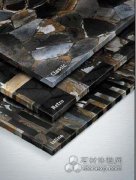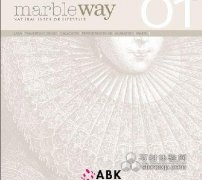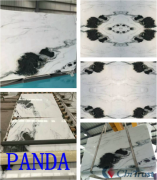How Marble Statues Sculptures Were Carved
As a definition, a marble sculpture is the result of forming a 3-dimensional visually object of interest from natural marble.
Carving marble into sculpture or statue is a classic art that can trace back to the pre-civilization age. Prehistoric sculptures were typically human figures, such as the Venus of Willendorf and the faceless statues of the Cycladic cultures of ancient Greece. Later cultures diversified the marble statues into different categories of objects such as animal sculpture, human plus animal sculpture and abstract sculpture. In the earliest time of marble carving history, primitive abrasive techniques were employed. In the modern time, real hand carving has dominated marble sculpture art since diamond tools and other carving equipments became available. Nevertheless, hammer and chisel are still sculptor's basic yet important tools for carving marble.
Marble sculpture process
Carving work starts with the selection of a piece of suitable marble for carving a specific object. Good sculptors can carry out carving in a direct way through imagination, without creating a modifiable clay model first. This type of carving process is often called direct carving, in which an object is carved directly into marble, with imagination as a guideline. Typically the sculpture will make a rough sketch on marble block to start and develop the work along the way. This carving method is very inspiring but could also have certain problems. The sculptor may have to repeat his work several time before a successful completion, which could cause significant waste in time and marble materials.
Another carving process is called modeled carving, in which the sculptor precisely copies the forms in predefined models into marble. Common materials for creating the modifiable models include clay, wax and fiberglass. After a model is created and finalized, the sculptor starts carving marble in a coordinate measured with calipers or pointing devices in reference to the model. Comparing to direct carving, the modeled carving process leaves much less chance for error, so more desirable results can be achieved. But this process involves additional costs. In the volume production of one object, the modeled carving must be used to ensure consistency.
Many artists have used marble as inspiration. Renaissance artist Michelangelo claimed that his job was to free the human form trapped inside the block.
Direct carving process
1. Rough Sculpting
A sculptor usually begins the carving process by knocking off large portions of unwanted marble. For this task he may select a point chisel, which is a long, hefty piece of steel with a point at one end and a broad striking surface at the other. A pitching tool also need to be used at this stage, which is a wedge-shaped chisel with a broad, flat edge. The pitching tool can effectively split the marble block and remove large, unwanted chunks. Sculptor also selects a mallet, a hammer with a wide barrel-shaped head, and places the point of the chisel or the edge of the pitching tool against a selected part of the marble, then swings the mallet at it with the strongest possible stroke. Sculptor must be very careful to strike the end of the tool accurately as any small miscalculation could hurt his own hand. When the mallet connects to the tool, energy is transferred to shatter the marble. Most sculptors work rhythmically, turning the tool with each blow so that the marble is removed quickly and evenly. This is the "rough sculpting" stage of the carving process.
2. Refining
Once the general shape of a statue is formed, the sculptor uses other tools to refine the figure. A toothed chisel or claw chisel that has multiple gouging surfaces is used to create parallel lines in marble. These tools are commonly used to add texture to the figure. A sculptor might mark out specific lines by using calipers to measure an area of marble to be addressed, and marking the removal area with pencil, charcoal or chalk. Sculptors use much milder strokes at this point of the process. In the rough sculpting stage, the tools hit marble block at a 90 degree angle, while during the refining phases, as a general rule, sculptors must hold the tools at an angel of 45 degrees or less to strike the marble.
3.Final stages
After the marble is changed from a rough block to the general shape of the finished statue, another set of tools, namely rasps and rifflers, are used to enhance the shape into its final form. A rasp is a flat steel tool with a coarse surface. Sculptor uses broad, sweeping strokes to remove excessive marble chips or dust. The riffler, a smaller version of rasp, is subsequently used to create details such as clothing folds and hair patterns.
Final stage of the entire carving process is polishing, which is capable of bringing out real colors and textures of marble, revealing patterns in the surface and adding a sheen. If a highly glassy appearance is desired, an additional round of polishing with tin and iron oxides is applied to conclude the process.
Marble Sculpture carved according to model
1.Prepair Block
2.Carve according to model
3.Refining
4.Polished
Monthly Recommendation
Recommended News







